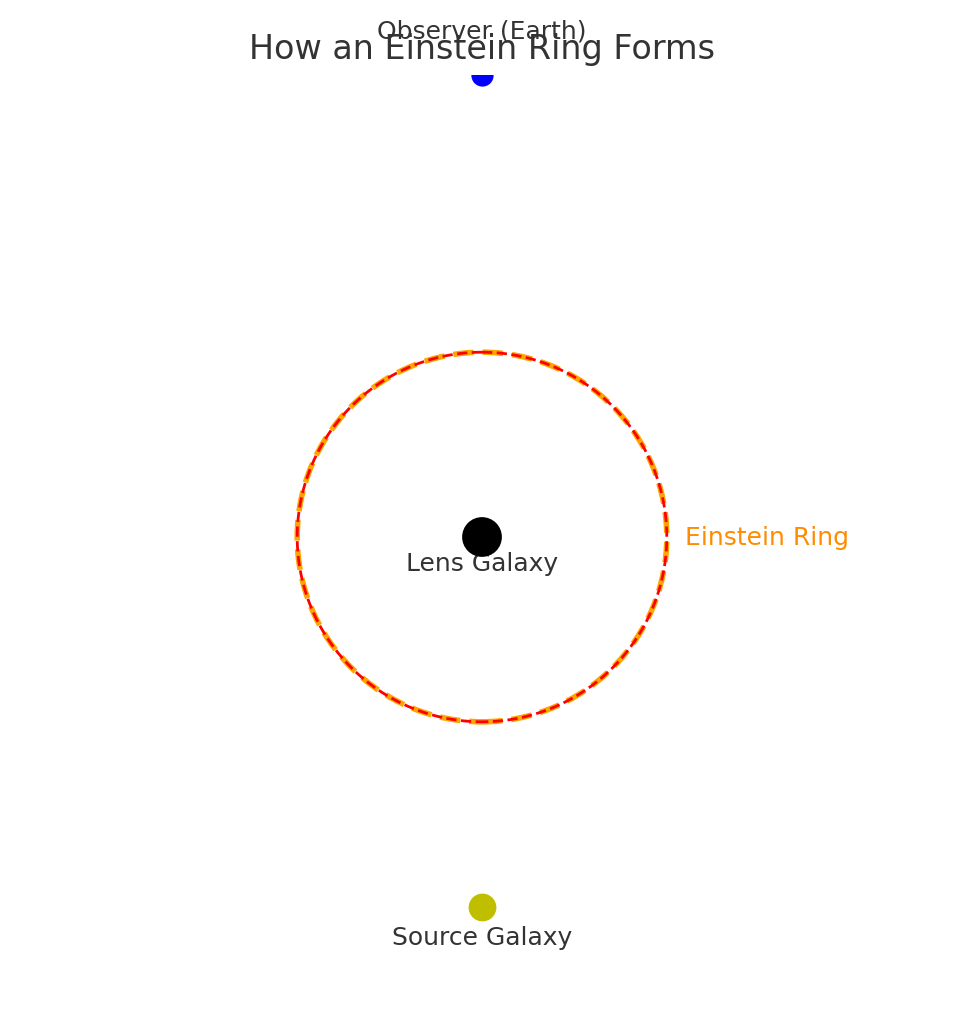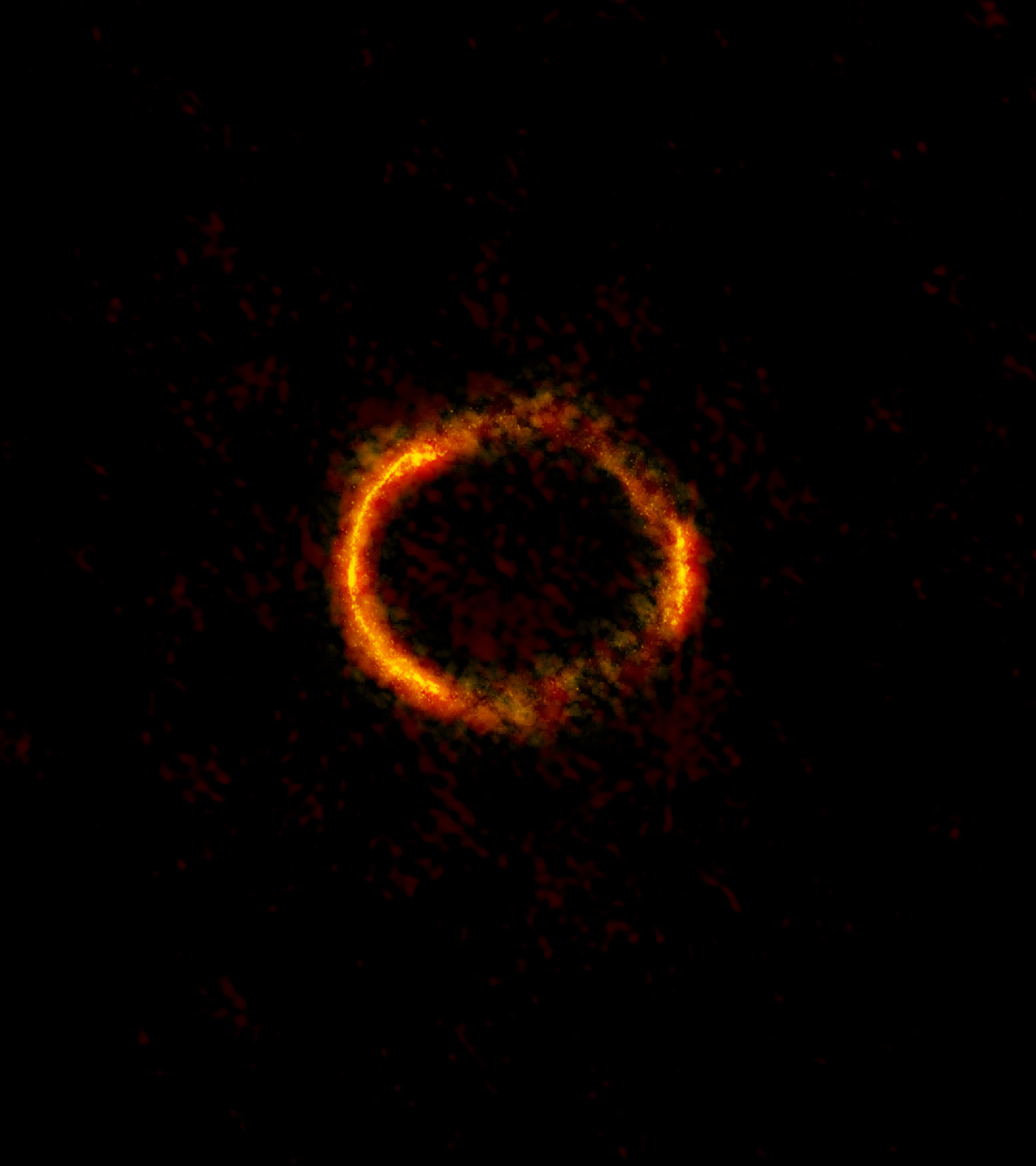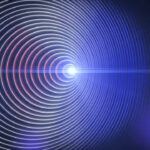Imagine looking through a telescope at a distant galaxy and instead of seeing a tiny dot of light, you see a perfect glowing ring floating in space. A ring made not of matter, but of light itself. Sounds like science fiction, right? But this isn’t fantasy—it’s physics. Welcome to the strange, beautiful world of Einstein Rings.
A Strange Question
What if space could bend? Not just stretch like a rubber band, but curve so much that light itself takes a detour? That’s the question Albert Einstein’s General Theory of Relativity answered in 1915. According to Einstein, massive objects like stars, galaxies, or black holes don’t just sit in space—they warp it, like a bowling ball sinking into a trampoline.
Now picture light as marbles rolling across that trampoline. If they pass near the bowling ball, their paths bend. That bending of light is called gravitational lensing.
From Bending to Rings
Here’s where it gets really interesting. Imagine a distant galaxy (the light source) sending its light toward Earth. Between us and that galaxy sits another massive object, like a huge cluster of stars (the lens). If the alignment is just right—Earth, lens, and source all in a straight line—something magical happens:
- The lens bends the galaxy’s light around itself.
- The bent light converges at Earth.
- Instead of one dot of light, we see a ring of light around the lens.
That ring is what astronomers call an Einstein Ring.
It’s not that the galaxy turned into a circle. The light simply traveled along different curved paths and arrived to us as a glowing circle.
The Mechanism in Plain Words
Think of it this way:
- Source (distant galaxy): The “light bulb.”
- Lens (galaxy or black hole in between): The “magnifying glass,” except it bends light with gravity, not glass.
- Observer (us on Earth): The one catching the final picture.
When all three line up perfectly, the magnified image we see is not distorted randomly—it forms a circle.
And if the alignment isn’t perfect? We see arcs or partial rings instead, often nicknamed “Einstein arcs.”
Visualizing It
Here’s a simple diagram to lock the idea in your mind:
Light from the source galaxy bends around the lens galaxy, and when it reaches Earth, it appears as a glowing circle—the Einstein Ring.

Why Should You Care?
It’s easy to think: “Cool trick of light, but so what?” Here’s why Einstein Rings matter:
- Measuring Invisible Mass
Some galaxies act as lenses but don’t give off much visible light. By studying the ring, astronomers can measure the gravity of the lensing object. That means Einstein Rings can reveal dark matter—the invisible glue that makes up most of the universe. - Cosmic Magnifying Glass
The lensing effect magnifies the light of distant galaxies. Thanks to Einstein Rings, astronomers can study galaxies billions of light-years away that would otherwise be too faint to see. It’s like putting the universe under a cosmic microscope. - Testing Einstein’s Theory
Every time astronomers observe a ring, they’re indirectly testing General Relativity on cosmic scales. So far? Einstein’s math still holds up.
Real-Life Examples
- The “Cosmic Horseshoe” – Found by the Hubble Space Telescope, it looks like a glowing blue horseshoe around a galaxy 5 billion light-years away. This is a partial Einstein Ring.
- The Complete Ring SDSS J1430+4105 – One of the cleanest full Einstein Rings ever observed. It sits around 6 billion light-years away.
- Galaxy Cluster Abell 1689 – Known for producing dozens of arcs and rings, showing how massive galaxy clusters bend light like funhouse mirrors.
Many of these rings are so faint that only Hubble or advanced telescopes can reveal them. But once you see one, it looks like cosmic jewelry floating in space.
The Big Picture
So, the next time you look at a starry sky, imagine this:
Behind one tiny point of light might lie a galaxy whose light has been stretched, bent, and wrapped into a cosmic circle by another galaxy’s gravity.
Einstein Rings remind us that the universe isn’t just a backdrop of dots. It’s a living, dynamic fabric where space itself can bend into shapes we can see.
And perhaps the most beautiful part? Einstein predicted this effect with pen and paper in 1915, long before we had telescopes powerful enough to confirm it. Today, we not only see his rings—we use them to explore the invisible universe.
This lesson was created for Learn.utopiacircle.org – making Astrophysics accessible through relatable stories and real-world connections.


